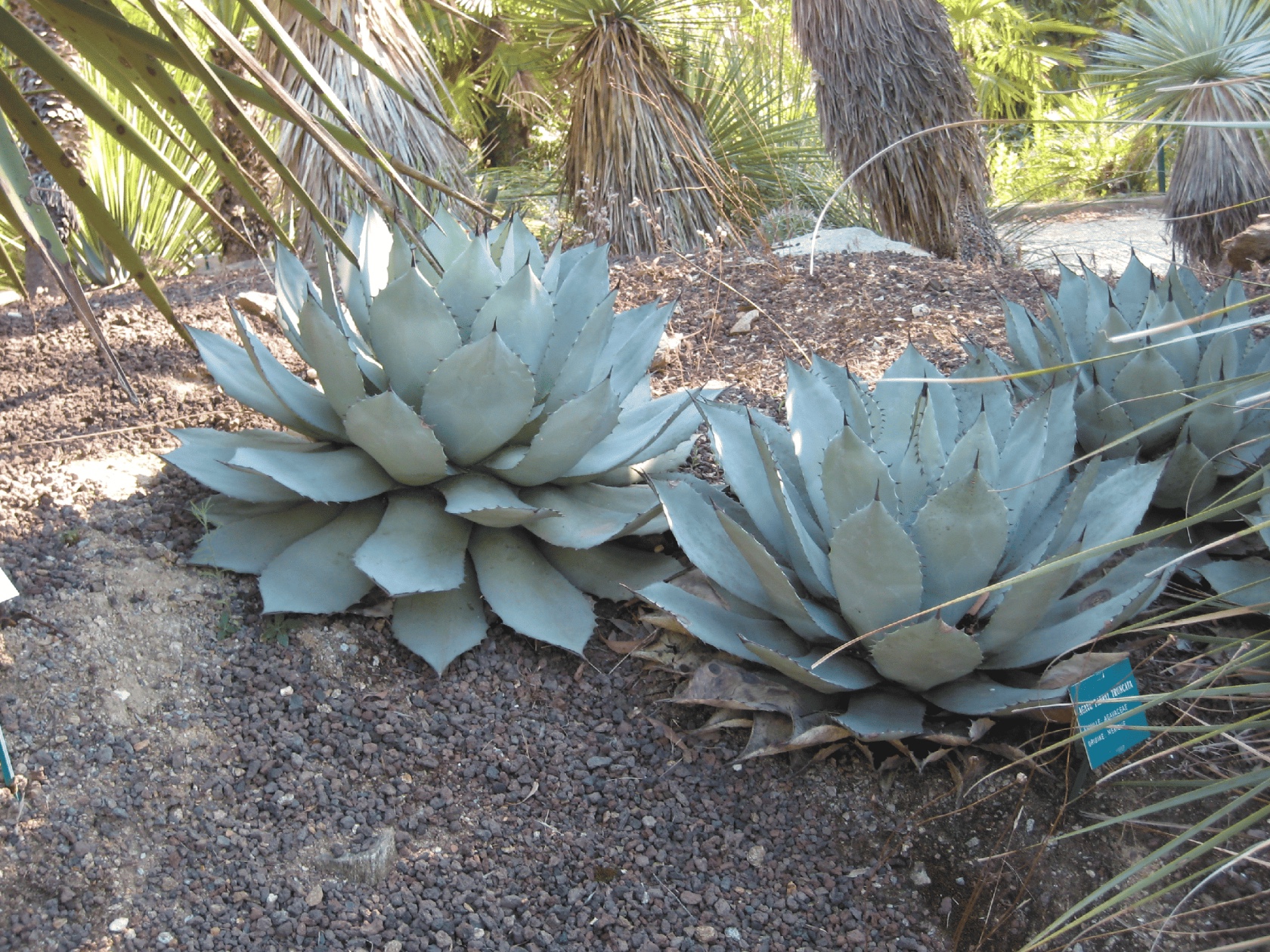
Caption
Agave tequilana. Credit: Stan Shebs, Wikimedia
Subhead
Agave: The Star of Low-Maintenance Gardening
Read Next
Types

Agave plants come in a wide variety of shapes and sizes, each with its own unique characteristics. Some are small and compact, great for growing indoors; others are large and dramatic to make a bold statement in outdoor landscapes. Here are some of the most popular types to help you choose the right variety.
- ‘Variegata’ (Agave americana): hardy in Zones 8 to 11; 5 to 8 feet tall, 10 to 15 feet wide; the name refers to the color of its blue-gray leaves, which have yellow edges in a rosette growth pattern; produces yellow-green flowers; pups emerge from the base.
- Foxtail agave (A. attenuata): hardy in Zones 10 and 11; 2 to 3 feet tall, 3 to 6 feet wide; pale blue to yellow-green spineless leaves; the name refers to its arching stalk 10 or more feet long, on which form rosettes that eventually turn into thousands of yellow-green flowers.
- ‘Quadricolor’ (A. lophantha): hardy in Zones 8 to 10; 12 to 18 inches tall, up to 2 feet wide; the name refers to the hues of its red-tooth leaves, which have dark green centers, pale green stripes, and yellow edges; in cold temperatures, leaves turn pink to red; produces yellow flowers; offsets can be taken in spring or autumn.
- Whale’s tongue agave (A. ovatifolia): hardy in Zones 7 to 11; 3 to 4 feet tall, 4 to 6 feet wide; name describes the rosette of slightly cupped, powdery blue to gray leaves with small teeth; produces yellow-green flowers on 14-foot stalk after 10 years; reproduces by seed and bulbils.
- Parry’s agave (A. parry): hardy in Zones 7 to 10; 1 to 3 feet tall, 1 to 3 feet wide; slate-gray/blue foliage forms a tight whirling rosette of toothed leaves; produces yellow flowers on 10- to 20-foot-tall stalks; offsets grow from the base.
- Octopus agave (A. vilmoriniana): hardy in Zones 9 to 11; 3 to 4 feet tall, 5 to 6 feet wide; toothless, gray-green, undulating leaves resemble octopi tentacles; produces golden yellow flowers on 10- to 20-foot stalk; plantlets form along the bloom mast.













Comments